The biggest change in Trump’s tariff tune
Wednesday’s story, which I’ve added back into the headlines, was about how Trump is sounding off a lot differently about the impacts his tariffs will have on the economy. While the whole Trump Team originally repeated in perfect harmony that tariffs would not cause inflation and then admitted there would be “a little” suffering that had to be endured short term for the greater good, Trump, himself, is now admitting there will be inflation, and it sounds like the pain will be quite a bit greater than his team first let on. Or maybe a lot greater (which they still are not letting on). Everything they sang to us from the start was Looney Tunes.
I’ve referred to Trump’s new change of tune on inflation already as his “Then let them eat dolls” version of Marie Antoinette’s infamous statement when told that the peasants could no longer afford bread, “Then let them eat cake!” Trump showed himself to be equally tone deaf this week.
“This feels tone-deaf to me. This is, ‘You’re too materialistic. You don’t need as many dollars as you think.’ And he’s a very strange messenger for that message, and I don’t think it’s going to sell,” Holtz-Eakin said.
His actual statement went like this:
Trump was asked Sunday by NBC’s Kristen Welker if he would acknowledge that his tariff plan will result in higher prices….
He suggested that American children, for example, do not need as many toys and that Americans do not need to spend as much money on “junk we don’t need.”
“I’m just saying they don’t need to have 30 dolls. They can have three. They don’t need to have 250 pencils. They can have five,” Trump said, acknowledging the prices of such items could also go up.
Here’s the thing: When they said all along that tariffs would cause no inflation, I said all along that it certainly would, and I explained why there would be a difference between this time and Trump 1.0. Now that they start admitting inflation will be high enough that you’ll actually have to make do with a lot less stuff, then you know the inflation problem is clearly in their own eyes, turning out to be a lot worse than what they told you. They are starting to prepare you for the impact. I’ll even stay with Trump’s exaggerated example to show you the size of the impact because who knows but what this inflation will actually become as bad as the example implies, though I think he exaggerated it for different reasons:
You’ll have to go from 30 dollars to three and from 250 pencils to five. From that, I could infer that three dolls will now cost you what 30 dolls cost last year, and five pencils will cost what 250 pencils cost last year. I will resist overstretching the analogy by going that literal, but I don’t mind using Trump’s example against him since he came up with it. So, I’ll just say, let us all hope and pray that the coming inflation is not as bad as his example might imply. I’m not so sure it won’t be.
The important thing is that the “tariffs do not cause inflation” narrative has finally been jettisoned like Airline Pilot Barbie right out the window. (Mattel, by the way, has been telling you all along that her price is going to fly a lot higher, too, due to tariffs!)
Even Trump is realizing he must now prepare his supporters for the inflation that is certainly coming. But, who are you going to thank for this “transparency?” One person was either too ignorant about economics to understand why very high tariffs would cause very high inflation this time around, or he was always lying to you, and knows the lie is about to be revealed by reality, so it can be maintained no longer.
The other person told you what you might not have wanted to hear all along, even though it meant his flight of readers here rose, which was that you had better believe high tariffs will cause high inflation because 1) they will be added to the price and 2) they will cause shortages. Do you suppose those who fled the commentary they didn’t want to believe will come rushing back when they find they really are paying higher prices and seeing a lot of shortages, meaning doing with less? (I doubt it very much.)
One story recently, if the grassroots sources can be trusted (sometimes their local angle is the best, but not always), is a video included in the headlines below about how the shelves at some Walmart stores are already being stripped bare.
There is another thing that is very important here, which is not just that Team Trump was clearly DEAD WRONG about inflation, so they are starting to try to ease people into that truth without doing a total face plant. They don’t want people to realize they were either incredibly dumb or incredibly dishonest. However, note that their change of tune—if the new obvious truth holds—is a betrayal of the very slogan “Make America Great Again.”
Is doing with a LOT less of the “junk you don’t need,” as Trump now says people will need to get used to, what American greatness and the robust American consumer are all about—making do with as little as you can? Will Trump be making do with a lot less of what he doesn’t need from now on? Or is this “let them eat cake” just for the peasants?
Those who still want to believe Trump, in spite of this rather brassy change of tune, will counter that this is just the short period of suffering he said would be necessary in order to get to greatness. I’ll show below, from Trump’s own words, that this is not a transitory situation. For the moment, I’ll just remind you that the very same guy who told you all along that these Trump Tariff Wars ARE going to cause inflation is also the guy who has been telling you that none of this is going to lead to greatness down the road either. So far, it is that last guy who has been telling you the unwanted, unvarnished truth and the other guy who is slowly coming around to admit to some of that. Maybe the guy giving the unwanted truth is wrong about all the rest, but let us continue on with all the other notes that are changing in Trump’s orchestra of cacophony and chaos to show you how significant this change really is.
Throughout his 2024 run, the president promised Americans a return to the prosperity of his pre-COVID first term. “Starting on day one, we will end inflation and make America affordable again, to bring down the prices of all goods,” he told a Montana rally in August. “They’ll come down, and they’ll come down fast,” he declared days later in North Carolina. But at the same time, Trump also promised to impose steep tariffs on consumer goods—dubbing tariff one of “the most beautiful words I’ve ever heard”—even though the levies would effectively serve as a tax on everyday Americans.
These two pledges could not be reconciled, and once elected, Trump was forced to choose between them. The results have disillusioned many of those who voted for him. Trump’s approval on the economy has plunged since he announced his “Liberation Day.”
The new no-trade tune
When Trump imposed tariffs on the whole world, he sent stock and bond markets into chaos … especially when he raised some of them to 145%. Clearly, at levels in the nosebleed section of the concert hall, there was going to be considerable inflation or considerable shortages (both really) because NO BUSINESS was going to be able to absorb a tariff of that size and not pass it on to the consumer.
Now, we KNOW the shortages are showing up by not showing up, referring to all that stuff I’ve been saying is not arriving at ports anymore, and we have, at least, that one grassroots video talking about the shortages of some items already appearing on Walmart shelves (if it does’t misunderstand the reasons why that is happening). We also have major logistics people telling us the shortages are about to become extreme, as I quoted two of them earlier in the week, and it is certainly their business to know what is coming to ports soon and what is not, because they book and track the transportation.
So, we are moving past my warning you about all of this and into my starting to write about how it is now actually happening. And that is WHY President Trumpet is not blowing his own horn so loudly about how well it is all going. He has no choice but to change the lyrics of his song, if not the tune, to say something much different because he KNOWS you are about to see it all for yourself. So, the first step is to get you conditioned to agree that you really don’t need so much darn stuff. (I have no problem with that message ideologically, as I am not a materialistic person. I easily give away what I don’t need. I don’t like to be buried in stuff. I truly never even care if I do not get a Christmas or birthday present because I don’t know what I’d do with more stuff than I have. I have all I need and all I have time for. Nevertheless, making do with less is not what makes a consumer-based economy great again. But he needs his supporters to say, “True, we need less stuff,” so the proletariat will be appeased with having a LOT less stuff in the near future.
Nor does making do with less sound like production will be ramping up inside the US. That’s the dream, but it is not likely to be the reality:
“What would prevent a business right now from saying, ‘Hey, if there’s a tariff, I’m going to start manufacturing something at home’? Well, they can’t do it because if there’s a recession, it’s not an easy time to start a high-scale manufacturing business, especially if orders are down, stores are closing and consumption is down,” she said.
Not the time anyone wants to build new factories … at least not until the dust settles.
And the oil industry that was going to love him? Not so much after tariffs:
Other pro-Trump sectors have experienced similar whiplash. In 2024, oil and gas interests gave an estimated $75 million to elect Trump. In his stump speech as a candidate, Trump promised to end what he called“the Biden-Harris war on American energy,” and led crowds in chants of “Drill, baby, drill.” But the tariffs Trump has imposed as president have crippled the industry by hiking costs of components while cratering the price of oil amid an anticipated economic downturn.
Now that he can no longer carry the old tune about no inflation, it turns out he is also changing the words drastically to “We don’t need any deals. They need us. We don’t need them. We don’t need their stuff.” When asked about where the deals are …
President Donald Trump told reporters in the Oval Office on Tuesday that the United States does not have to sign any deals on trade.
The president, who appeared frustrated with reporters asking when the first tariff deal would finally be announced, snapped that it was incumbent on other countries to agree on a deal with the U.S., not the other way round.
“Everybody says, ‘when, when are you going to sign deals?’ We don’t have to sign deals. I can sign 25 deals right now… if I wanted. They have to sign deals with us. They want a piece of our market, we don’t want a piece of their market. We don’t care about their market,” Trump said.
If you don’t care about their market, why are you making such a huge fuss about them not giving us enough access to their market, and why are you claiming that is leaving us with trade deficits? Trump’s own words belie themselves! They are also another major change of tune from the days when Trump was telling us all that the world was backing up his phone lines with calls desperate to make deals. These are the kinds of words you say when you have no real deals to show (the one deal just announced we’ll go into below). This is sour grapes. “Deals? We’re not looking to make deals. We were never looking for deals.”
Sure! What were you looking to gain from all this inflation and financial market turbulence if not access to their markets that you now claim you don’t even want a piece of? That’s such a blatant and self-evident lie. His tariff wars were formerly all about the great deals the man who knows the “art of the deal” was going to make. Now, he says we don’t even need deals (because we don’t have any to show for all of this that are worth showing).
Of course, that kind of bluffing is also “the art of the deal,” so as not to sound desperate to the people you are dealing with, but don’t let yourself be fooled by the art. He’s hoping the Chinese and others will be, but I’m sure they can see right through it. If not, they’re pretty dumb because Trump is saying this in response to reporters’ questions about “What deals do you have to show so far?” Therefore, it means, “We ain’t got much,” or he’d be elated to tell you all about them. It’s a bluff and not a very convincing one.
Before getting into the one deal that was just announced and how truly bad it was, let’s talk about this nonsense that we don’t need them; they need us: When you are the biggest importer on earth, it screams out loud that you crave imports, and you also need them, or you would clearly not be importing so much.
Lack of imports due to tariffs in a nation with huge trade deficits means a lack of food to eat from those tropical things that you don’t grow, and other things where you supplement what you grow. It means a lack of clothing that you don’t manufacture here anymore. Lack of a lot of things. America didn’t sign on to Making America Great Again, so we could pay a lot more to get a lot less! But that IS where we are right now. So, yes, we need, and Trump desperately needs, a deal to show for all of this. (And I’ll show how desperate he is in a minute.)
Lack of imports is also matched up with lack of exports, due to the inevitable retaliatory tariffs, as reported earlier. Just as many ships are failing to leave US ports with US goods as are failing to arrive. So, where we have way more food than we need on certain items that we are very good at growing here, we cannot begin to export it all and make money to buy other things now that we have these tariffs freezing up markets. So, you had better plan to eat a lot of soy products and switch from scarce chickens (thanks to Biden’s chickenomics) to eating a lot more pork, since pork farmers will starve without their customary Chinese markets unless you buy a lot more pork.
In short, there is less of everything happening in both directions, and the world’s greatest consumer nation and greatest export nation need both in order to prosper and remain the greatest at those things.
The level of lying here about who needs what is childish. If we didn’t need it, we wouldn’t be buying so much of it! In the very least, we WANT it and want a LOT of it. And making America great was never thought to mean “learning to live with a lot less.” With that, let’s get to the latest ballyhooed deal to show how desperate Trump must now be to claim a deal and how the new deal means a lot less forever.
Where’s the beef?
First, a summary of the deal from Gregory Mannarino from “The Deal that Isn’t” because I happened to agree with it completely, and he sums it up simply, which is a good place to start:
We are being LIED TO AGAIN! Here is the breakdown….
Exposing the US–UK “Comprehensive” Trade Agreement for What It Really Is.
The media’s buzzing. The administration is boasting. Trump has declared the newly announced US–UK trade deal as “comprehensive” and “a major breakthrough.” But beneath the surface, behind the press conference lights and scripted headlines this deal is smoke and mirrors….
The Truth Beneath the Spin.
Tariffs still in place.
Despite being labeled “comprehensive,” the US continues to impose broad 10% baseline tariffs on UK imports, and the UK is still applying countermeasures on American goods.
Major disagreements unresolved. Details are vague. Enforcement? Questionable.
So What Is This Really About?
A political maneuver. Plain and simple.
The market has been bleeding. Inflation pressure continues. Global investors are losing confidence. And the public is growing weary of theatrical headlines that mean nothing on the ground.
This deal is timed not for economic growth, but for perception control.
A staged “victory” to calm the masses and slow the selloff.
This is not diplomacy.
This is damage control.
Those are summary assertions about the deal, and I agree with them as conclusions. I’ve said all along that when we finally got a deal, it would be a token deal—a little bit to brag a lot about. Still, to know if those summary conclusions are justified, we need to stick the forks in this thing and pull it apart to see if there is any beef inside, or is it all just a big ball of fat?
Under immense pressure to show his trade agenda is paying dividends, Trump celebrated the first tangible results with an announcement on May 8 in the Oval Office that included his economic team, the U.K. ambassador and the U.K. prime minister joining by telephone.
Trump touted the deal as “very big” and “maxed out” despite skepticism around its significance.
So, Trump trumpeted as he usually does about the “very big” deal, even though we supposedly don’t need any deals. In which case, who cares? How big? “Maxed out” big. This must be as good as it gets if it is “maxed out” and Trump isn’t just blowing his horn as he usually does about next to nothing actually accomplished. That’s harsh, I know, but let’s look at what is inside this ball of fat that is billed by Trump as a maximum deal:
A universal 10% tariff on U.K. goods will remain, but under the agreement, the United States is lowering automobile tariffs from 25% to 10% on U.K. vehicles. The U.K. also said that 25% steel tariffs imposed by the U.S. were reduced to zero.
There you are! That’s it in terms of the impact on tariffs. As Trump just said, a 10% tariff on just about everything is the new floor AFTER deals are struck. So, what did we get for this fight in exchange for being stuck with 10% tariffs when the deal “we don’t need” is done:
In exchange, U.S. officials said they are getting billions of dollars in access for U.S. agricultural products such as beef and ethanol.
Trump indicated future deals may be less favorable for foreign nations than the one he made with the U.K., suggesting that instead of maintaining the universal 10% tariff, they could result in higher tariffs.
“The template of 10 is probably the lowest,” he said.
So, that’s it; that’s the beef: we get access to selling more beef to the UK! Did we have serious limits on how much we could sell before? Maybe, but you can, at the end of the day only sell if consumers in the UK want to buy. The UK isn’t going to buy more beef, even if they have no barriers to accessing the market, if they have to pay more for it. So, will the price be low enough for UK consumers will want to get American beef? You cannot make them buy. You have access, but access isn’t sales. It means no one is going to stop you from selling there with restrictive measures, but no one is going to make the English eat more American beef than they want, either.
So, the REAL deal here appears to be that we got to drop our outlandish tariffs from 25% down to the “new standard” of 10%! Wow! What a deal. That is like me punching myself in the face over and over and then slowing down the blows and exclaiming, “Guess I won that fight! I am punching myself a lot less right now!”
Whoohooo!
Yeah, a blob of fat is all that was. We imposed very high tariffs to win a deal where we can keep in place more modest tariffs that we didn’t have before. But that is not the worst of it, as I’ll come to.
When the president makes a big show of a deal that mostly just got us to lower our own self-imposed tariffs, then I think he must have been feeling really desperate for a deal. That doesn’t sound like a win: we get to lower our tariffs. However, Trump says there is more to come. I guess he was just anxious to announce that some kind of deal had been struck because here are the particulars, and we all know the devil is in the details. So, details please:
Many specifics about the deal were not immediately clear, and nothing was signed during the Oval Office event.
“The final details are being written up,” Trump said. “In the coming weeks we’ll have it all very conclusive.”
Oh, crickets. Weeks from now, we’ll have a conclusive set of details where we can finally see if we are better off or worse off than we were before we agreed to settle in 10% universal tariffs. Without specifics, we have only this generality in which we get to take Trump’s words for how good the deal we cannot see because it does not really exist yet really is:
He said that the deal includes “billions of dollars of increased market access for American exports,” and that the U.K. will “reduce or eliminate numerous nontariff barriers that unfairly discriminated against American products.”
Maybe in the end, we’ll see we’ve gained enough to make it worth continuing to pay a 10% tariff on everything we import from the UK (and more from those other places that Trump said will likely end above the base 10% level) because that is who pays the US 10% universal tariff, which is the big reason this UK deal was such a bad deal for us. Success in getting foreign sellers to lower their prices enough to offset the tacked-on tariffs, which get added when the products arrive in US ports, has been spotty at best.
Here are the details put out the the White House, which sound possibly good, except that they are not signed yet and won’t be for some time, and tariffs remain in place:
A fact sheet from the White House said that the trade deal will:
Keep in place a 10% blanket U.S. tariff on U.K. imports.
Adjust tariffs on U.K. autos so that the first 100,000 vehicles imported from U.K. car manufacturers each year are subject to a 10% rate, and any additional vehicles face 25% rates.
Create a ”$5 billion opportunity for new exports” for U.S. farmers, ranchers and producers, including more than $700 million in ethanol exports and $250 million in American beef and other agricultural products. [Is the UK guaranteeing that its people and businesses will purchase that much more of each these things each year? How will they force that?)
Commit both countries to working together to enhance industrial and agricultural market access. [Vague.]
Close loopholes and increase U.S. firms’ competitiveness in the U.K.’s procurement market. [Vague.]
Streamline customs procedures for U.S. exports. [Vague.]
Establish commitments on intellectual property, labor and the environment. [Vague.]
Secure the supply chain of U.S. aerospace manufacturers through preferential access to high-quality U.K. aerospace components. [Did they have any reason not to sell us this stuff in the first place? Why would they turn away sales to the US?]
Create a secure supply chain for pharmaceutical products. [Vague. Was there any thing stopping them from selling pharmaceuticals or their ingredients to us?]
Require the U.S. to negotiate an “alternative arrangement to the Section 232 tariffs on steel and aluminum.” That includes creating a “new trading union for steel and aluminum.”
U.K. Prime Minister Keir Starmer, who joined Trump remotely, said, “We’ve built an incredible platform for the future.”
Let’s see what others say about all of that:
But some experts downplayed the impact of the deal, saying the path taken that the U.S. took with the U.K. cannot easily be repeated with other nations where America has a large trade deficit.
“It’s a very small win, and it’s limited in scope,” said Josh Lipsky, chair of international economics at the Atlantic Council, on CNBC’s “The Exchange” later Thursday.
It is certainly far from a free-trade deal that removes all trade taxes on both sides, and I’ll note now how it is NOT a win at all for US consumers, but a loss:
Supposedly, UK tariffs were at 5.1% and will be dropping to 1.8%, while US tariffs were at 3.4% and will be frozen at 10%. That sounds like something.
Oh, but hold it! I just remembered that the increase in US tariffs is on what YOU AND I pay, not what they pay, and that decrease in their tariffs on our goods is a decrease in what UK importers (and, from there, UK consumers) pay, not on what our exporters pay. So, how great of a deal is it that WE get to pay 10% MORE in perpetuity for everything we import from the UK?
Whoohoo! I am excited about that deal. That means the Range Rover I wanted (but chose a slightly used Jeep Grand Cherokee as more friendly to my budget) will only cost me 10% more from this point forward with a caveat: UNLESS the UK sells more than a total of 100,000 vehicles (of all brands together to the US) because after that, the tax on Range Rovers and anything else goes back up to 25%.
So, am I going to celebrate a deal that locks in place higher taxes on me for all those imports I do intend to buy now that the 10% added tax has been declared the “new floor” for all future deals, meaning most of the deals will be worse for me? Until now, I was still hoping Trump was reaching for a deal where we end up with barrier-free trade and no tariffs.
Maybe Trump was right when he said, “We don’t need any deals …” like this. You just have to tack those last two words onto figure out why we don’t need deals. Why, after all, do I want to pay any penalty tax on the imports I want just to pressure me to buy more local goods, instead? It is a tax that helps big businesses in the US sell to me by raising the cost of their competitors’ goods from overseas. It doesn’t help ME any!
Now, that was an accomplishment: thanks to the Trump Tariff wars, the world’s largest importing nation with a consumer-driven economy gets to pay a minimum of 10% more on all of its imports to help fund the US national debt! Yay!
That is 10% more inflation that gets added to the base price for all future inflation to be calculated on forever. But it gets even better: I now get to buy those foreign goods with a devalued dollar, jacking their prices up even more, thanks to the impact these global trade wars have already had on the dollar and US Treasuries (as I warned they would).
I feel like a winner!
No wonder I will only be able to buy three dolls, instead of thirty.
Thank God (or someone) I have Trump looking out for my interests so American businesses don’t have to compete so hard to keep my business from going to UK producers … and Japanese producers … and especially those low-cost Chinese producers. He’s found a way to balance those trade deficits by making sure I pay more for everything I try to buy that comes from outside the country, which is probably about 70% of everything I buy, even though I always try to support local businesses. (I just don’t usually pay attention to where they source their products.)
Cutting off some fat taxes
There is more good news on the tax front. This one I’m not so against because it, at least, doesn’t harm me, and I’ll let the very rich fight for themselves with their hire guns, because it still leaves them with vastly more exemptions on their taxes in the form of special capital gains rates, deferments, and lack of any kind of Social-Security tax on most of their income; but here it is:
Trump has promised to raise taxes on the rich!
This he proposes, igniting the fury of many Neocons, in order to remove income tax from social-security distributions, save Medicaid, and take taxes off tips.
I’ve got no beef with that! (Except that it still leaves all of the rich who dine at Mar-a-Lago with a lot more tax protection than I have, but it is a step in moving some of the tax relief down the line to the rest of us.) The rich, remember, do not pay the top tax rates on 90% or more of their income. They pay a lower capital-gains rate, and they get to defer that for decades if they hold onto their assets because it is only applied upon the eventual sale of the asset when the gain is realized; so, it is as good as deferred 401k taxes on most of their income. They are also exempt from paying any tax into social security on any of that income and on most of their “regular” income, which is, for the richest among us, their least-regular income—Capital Gains being much more their usual main source of income.
So, don’t let anyone talk you into believing the rich are getting soaked. Most of their income is shielded from the top tax rates you hear about them having to pay, especially once you also add in the many special loopholes they have cut out for themselves with the help of their hired guns. As Warren Buffett, one of the nation’s richest semi-retirees, has often said, he pays a much lower percentage of his annual income out in US taxes than his secretary does, and he’d be willing to pay more than her but only when that is assessed equitably on all the other rich people he dines with.
Your government has been loath to make that happen. They call such equal taxation on total income “soaking the rich.”
Now, if Trump had negotiated a true free-trade agreement that dropped all tariffs and artificial boundaries by both nations, I’d call that a win because then, I, as a CONSUMER don’t have to pay MORE on anything I buy, and I have MORE options of what to buy and, as a business, more options where to sell tariff-free. Even if our nation can export all it wants, it still has to compete for the interest of foreign consumers, but so what? That’s life in a true capitalist world. What do I care if we have a trade deficit because I want to buy more from the UK or any other country than the people in that country want to buy from us … so long as there are no boundaries, including subsidies, making it so our businesses have a disadvantage.
But that is not what we got. NOT EVEN CLOSE!
So, I still have plenty to really beef about as this deal means I pay more forever for less of everything. And that is the truly insidious thing about these tariffs, as Trump tells you about the tax breaks he is giving you: Keeping a universal tariff of 10% or more on just about everything becomes a long-buried sales tax that the consumer never gets to see itemized. How much the price of your goods gets hit with the tariff, and how much that may even get marked up as a source of profit for the wholesaler and retailer, and how much all of that gets compounded by inflation down the road, never shows up for the consumer.
What we will see is how much prices go up in the next couple of years as these tariffs get sorted out, and we’ll have to guess that most of the inflation above the Fed’s standard 2% is due to the tariffs because, while inflation was coming this year for certain anyway, I never believed it would be all that much. The importance to me in predicting that it was coming, as it now has, was that it pressurized things so that 1) the Fed cannot afford to lower rates or print money to save the crashing Everything Bubble unless it wants to create a lot more inflation, and 2) most of Trump’s promised tariffs would cause inflation in prices because prices are already pressurized, meaning there is not a lot of cushion left for businesses to absorb these new taxes.
So, the Trump Tariffs become, for the average citizen, a covert tax because they never see with any certainty how much the tariffs drove up individual prices (especially with goods coming from everywhere with different rates). And THAT diminishes the value of Trump’s new tax savings for the average guy to nil or worse. Mr. Average will be paying more in taxes. He just won’t know for sure how much is due to the various tariffs and how much is due to the Fed’s monetary policy or government economic monkey business. He won’t be able to see how much of the rise in the cost of services he buys is because those businesses are paying more for all the supplies and machinery they use in doing business in order to provide their services.
Read the full article here

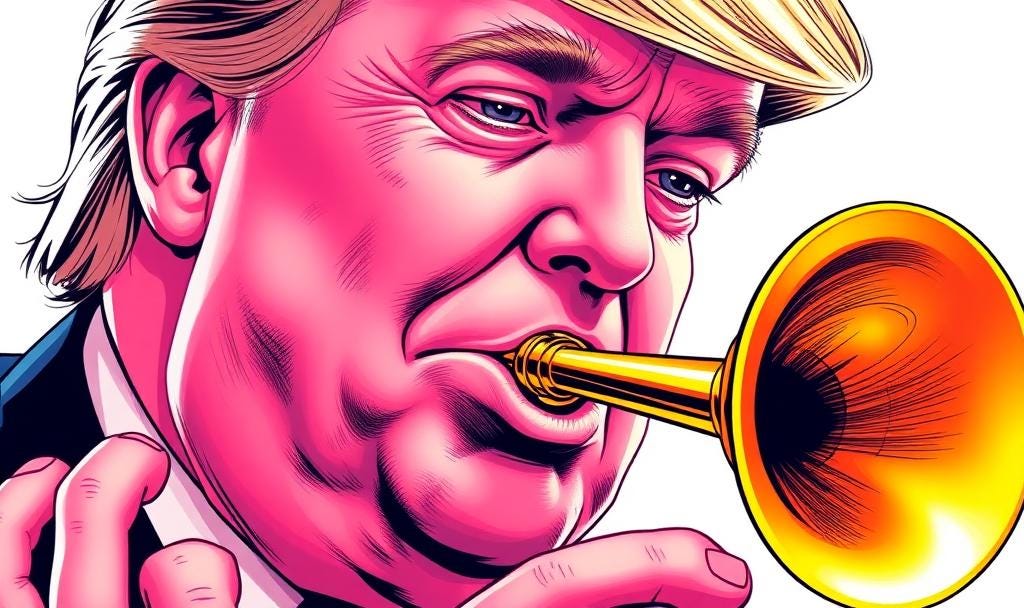
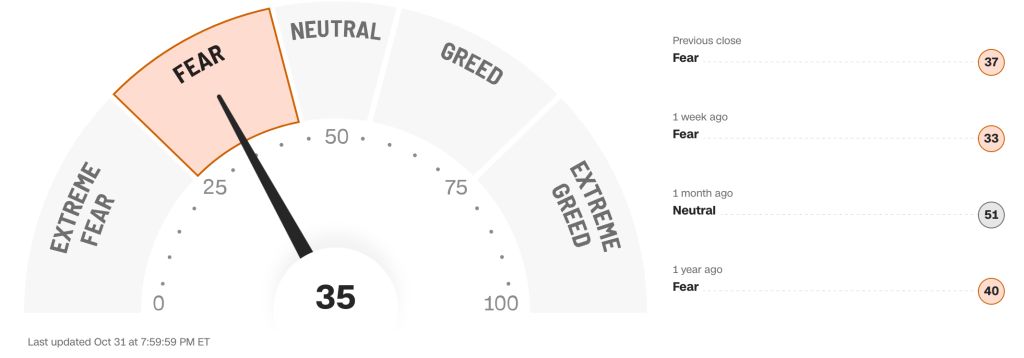
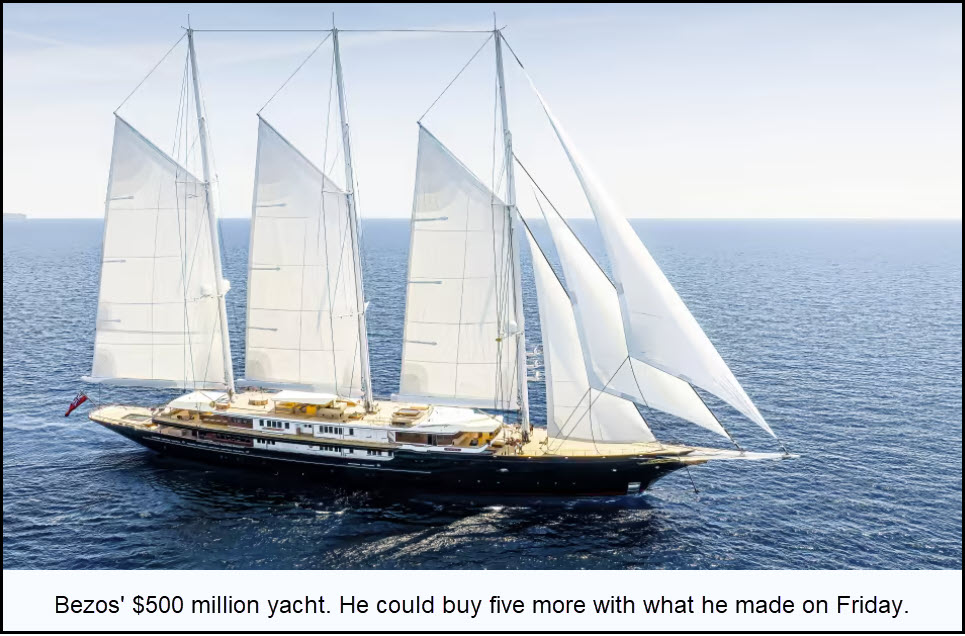
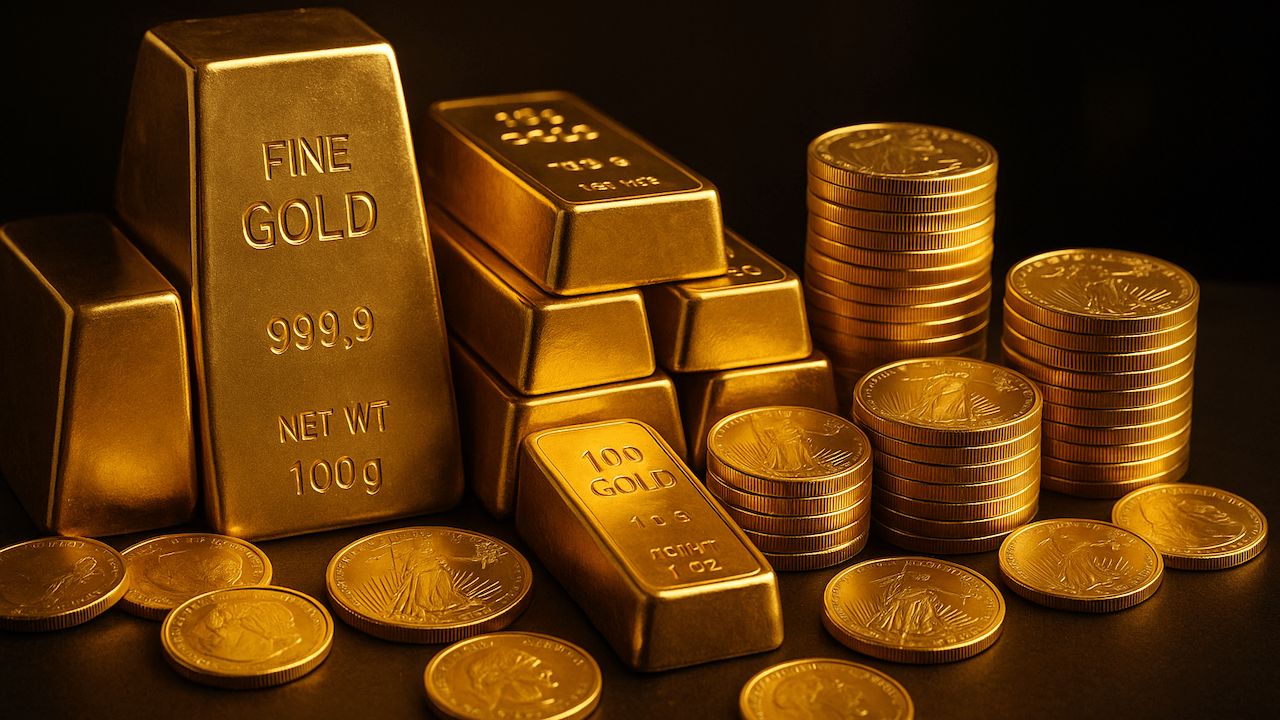
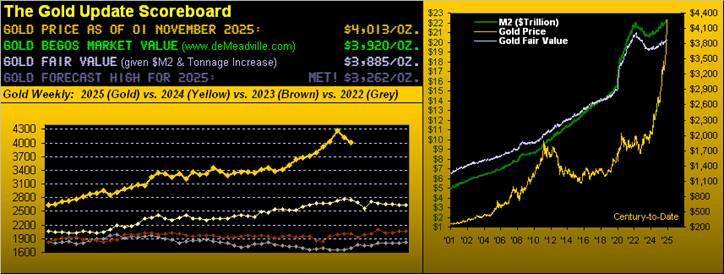
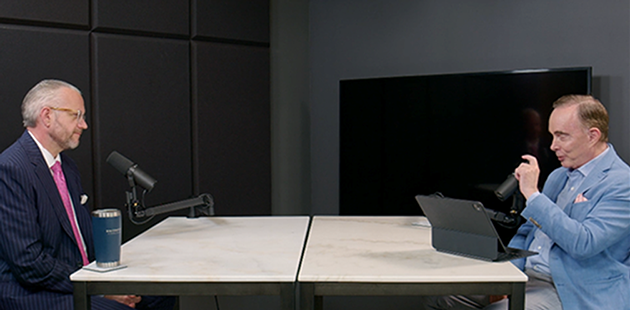
Leave a Reply